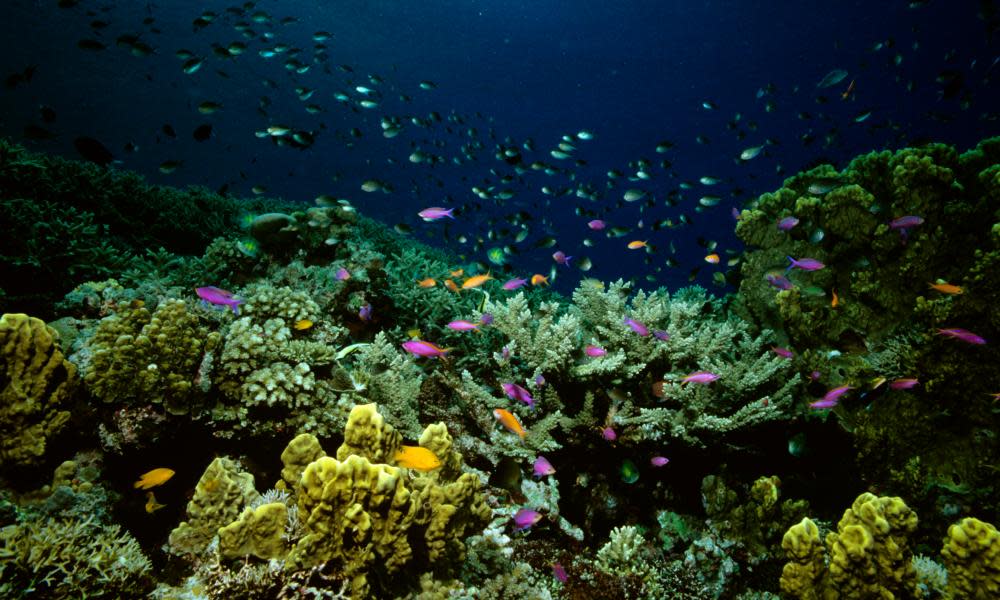Labor attacks Greens for dithering over marine park plan

Labor has blasted the Greens for not lining up immediately behind their commitment to disallow controversial new marine park management plans proposed by the Turnbull government this week.
The shadow environment minister, Tony Burke, told Guardian Australia the government had been intent for four years “on the largest removal of area from conservation in history”.
“This will be the first time the parliament has had a chance to object and Labor will be standing firm against this decision,” Burke said.
The Greens on Thursday reserved their position on the disallowance. The party’s healthy oceans spokesman, Peter Whish-Wilson, said if the plans were disallowed, “then we move from some protections to no protections, and the protections of our oceans have to rely on Labor winning government and the conservative major and minor parties not having the numbers to disallow whatever plans Labor put in place”.
What are the commonwealth marine parks?
The marine parks are a network of reserves covering almost 3.2m square kilometers of water around Australia.
How did they come about?
In 1998, under John Howard’s Liberal government, the commonwealth, state and Northern Territory governments agreed to establish marine reserves that were “comprehensive”, “adequate” and “representative”. The goal was to conserve marine ecosystems and protect biodiversity, without significantly damaging commercial or recreational interests. The governments set a target to have the reserves in place by 2012.
After years of planning and consultation, the Gillard Labor government unveiled the plans instituting those protections in June 2012. In November that year the marine parks were officially proclaimed.
The enforcement of the protections in the parks was set out in management plans, also published in 2012.
What practical difference did the parks make?
Very little, because at the 2013 election the Coalition under Tony Abbott was elected after promising to review the parks, and the management plans were set aside while the review was carried out.
The review concluded in September 2016 and recommended different management plans that made huge reductions in the highest level of protection.
In July 2017, the Turnbull government announced plans with cuts to protections that went even further. The proposed plans were published in March 2018.
What happens now?
The management plans are “disallowable,” meaning either house of parliament can block them by a majority vote. Labor has said it will move to do so in both the House of Representatives and the Senate.
Whish-Wilson accused Burke of “being disingenuous by saying these plans are a step backwards from what is there now. He never got the protections in place before Tony Abbott won office and right now these areas have no protections … Until there is a plan of management, these are marine parks on paper only.”
But Burke said: “The management plans were made law in 2012 when I was environment minister”. He said Whish-Wilson “should know this as he was a senator at the time when the Greens supported and voted to establish the marine parks”.
“Back then the Greens supported Labor in backing the marine parks,” Burke said. “If they want to backflip and start voting with the Liberals on marine parks that’s a matter for them, but Labor will not help the government lock in the largest removal of area from conservation in history”.
The government’s new marine park management plans were uploaded by officials onto the federal register of legislation on Tuesday, cutting across a public announcement the government had planned to make on Wednesday.
The environment minister, Josh Frydenberg, rejected Burke’s characterisation of his deliberations. He described the new regime as “a world-leading management regime”.
Frydenberg said the plans would mean Australia had 36% of its waters included in marine parks, and would benefit recreational fishers.
He said under the revised arrangements, 97% of commonwealth waters within 100km of the coast would be open for recreational fishing, and 80% of marine parks. Frydenberg said the government’s proposal would mean an increase of 200,000 square kilometres in the area with seafloor protection.
Frydenberg warned if the plans were not supported by parliament, protections for marine parks would revert to the status quo. Frydenberg said it would “take years to go through the necessary statutory processes and bring forward new plans”.
Whish-Wilson said on Thursday he needed more time to consult scientific experts and conservation groups about the impact of the government proposal before the Greens decided how to vote.
“What the Liberals have before the Senate is woefully inadequate and doesn’t deserve the name of a marine reserve,” Whish-Wilson said.
“But the dilemma facing the environment movement and communities who have campaigned for decades to get marine protections in place is whether a disallowance might mean no protections at all for the next decade.”

 Yahoo News
Yahoo News 
